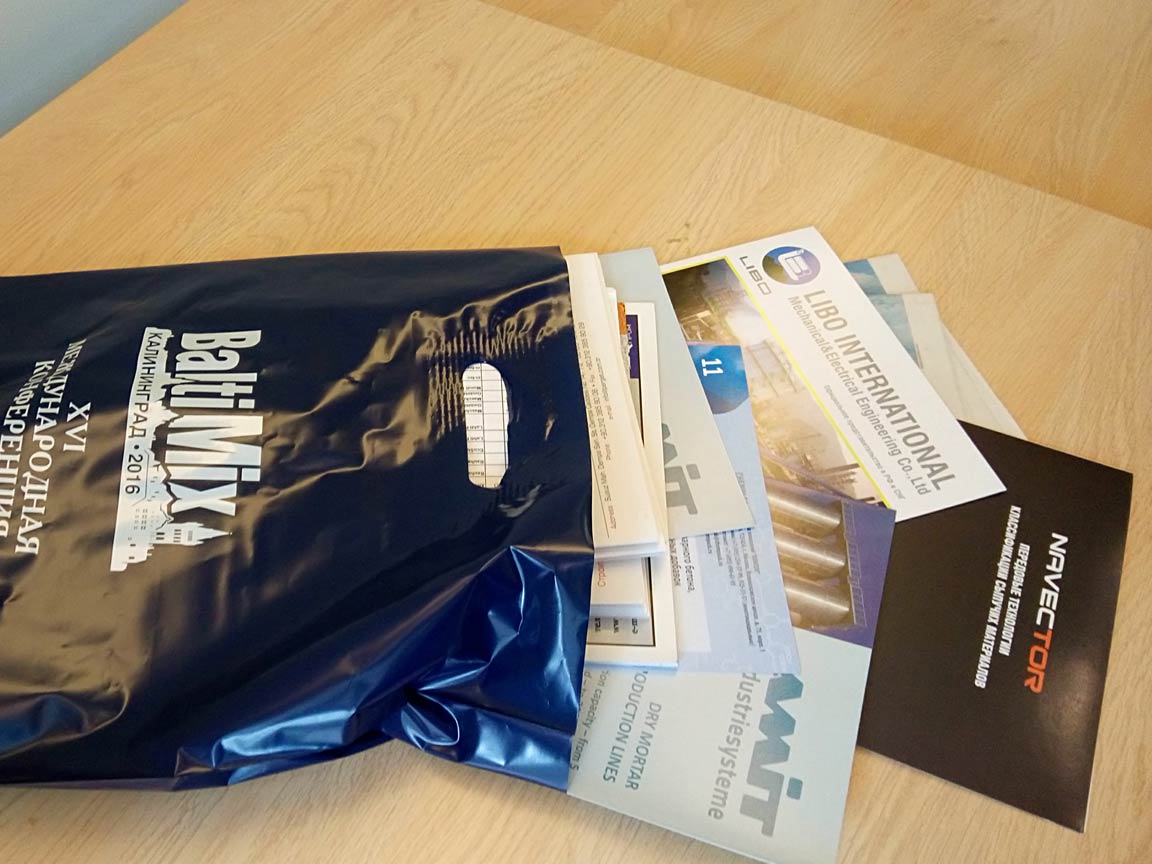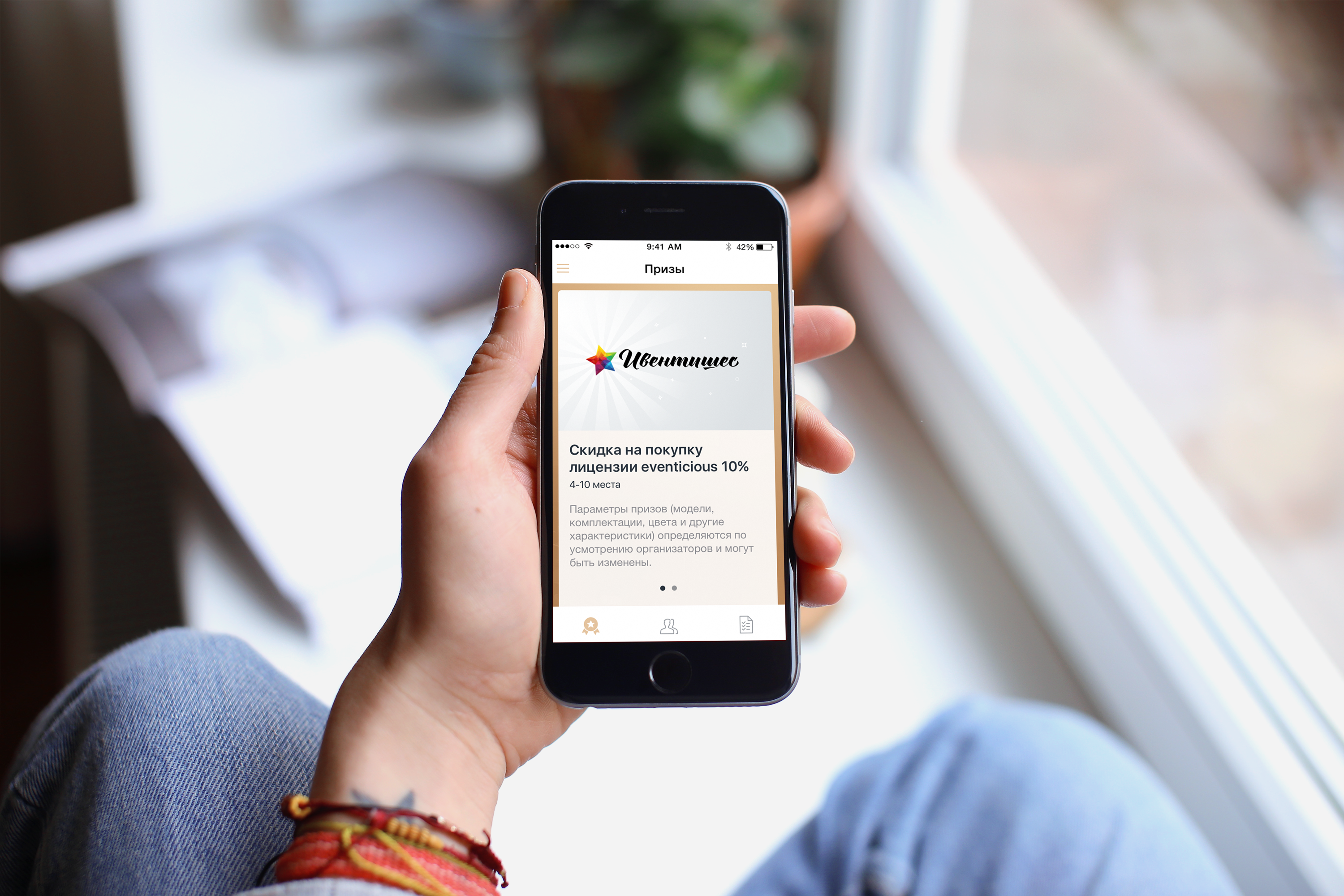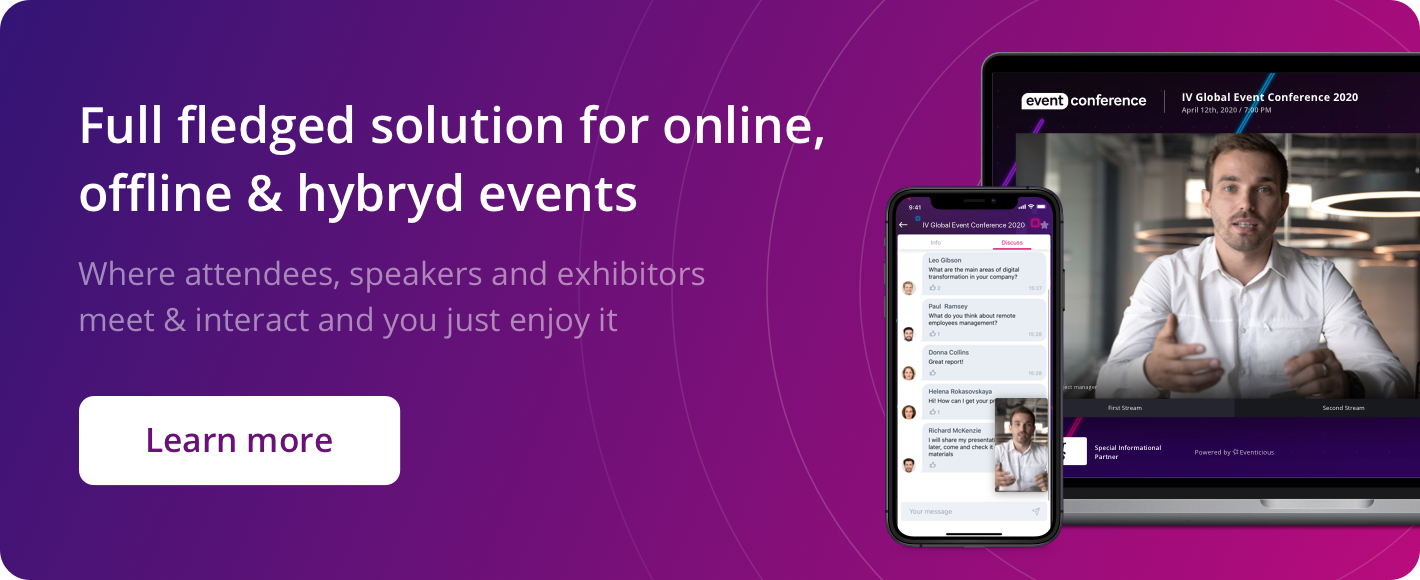Would you like to know a fail-proof way to recoup the cost of a mobile app for your event? Eliminate all paper handouts, or at least, use much less of them. Unfortunately, in reality, very few event organizers are prepared to take that step, which is a shame.
There’s no need to tell you that quality printed materials - all those booklets, catalogs, and leaflets - are pricey. The cost includes not only printing, but designing and copywriting, not to mention the paper or plastic bags that will hold all that stuff.
At a rough estimate, printed materials cost 2-3 times more than a mobile app.
At the same time, everything that fits into a printed booklet will easily fit into an application, leaving room for a lot more! Multi-track event schedule and full information about speakers and presentations, with attached polls, presentations, sponsors' ads and other materials.
Obstacles in the way of changes
So why can’t event organizers say goodbye to paper handouts? Why only few most daring are ready for the technological revolution, while others are still busy picking out the size of the garbage bins to match the size of their audience, pretending they’ve never noticed how most paper handouts go straight into the bins?

These are the three biggest concerns, as reported by event organizers
- Not everyone has a smart phone, and not everyone will install the app.
- Sponsors want a tangible return on their investment. It’s easy to show them a glossy booklet, but what if you don’t have one? An app is something you can’t touch.
- In addition to printed materials, swag bags contain gifts from sponsors. You can’t put those into an app.
Are these concerns justifiable? Let’s see.
The first one is easy. Unless your event is a convention of digital ascetics, a vast majority of attendees will own a smartphone. You can achieve an adoption rate of 90% and more. Based on our experience, it’s not that difficult if the organizer is really interested in the result.
As for the sponsor integration and the gifts in swag bags, they deserve a closer look.
One of our customers once tried to explain why they are not ready to get rid of free stuff in swag bags: “You see, gifts tell a story that will be remembered and associated with the brand”.
But what story will a cheap 2GB USB stick with a logo tell you? Or a notepad, a calendar, a plastic pen? The value of these gifts is very questionable.
In our everyday lives, most of us prefer to use good quality flash drives, stylish and reliable pens and calendar apps on our phones. We don’t really need those crappy souvenirs, even for free. It’s a common knowledge that people put least value on things they did not pay for. So, it’s more likely that the story associated with the brand will go like this: “Everyone got some trinkets; I kept but never used them; they gathered dust and kept turning up in random places, and then I never saw them again.”
A different story
Why not tell quite a different story? For most of us, the most interesting stories are stories about ourselves, it’s just the way we are. Preferably, positive stories that leave pleasant memories. As for sponsors, they also want positive stories that would be associated with their brand.
The task of event organizers is to meet these two expectations, and this is exactly where the mobile app comes to help.

How to serve sponsored ads in a mobile app
For example, you can have interactive sponsor pages in the app. When attendees get to the bottom of the page, they will see a button saying “Get a gift from the sponsor”. When they tap this button, a code will be generated, and the first 10/20/50 participants can use that code to get a gift at a special stand. With this scenario, you will need 4-5 times fewer gifts, but the gifts themselves can be more valuable and desirable.
Advantages:
- Event attendees don’t just get free stuff for doing nothing, they have to “earn” it, and this alone will make the gift more valuable in their eyes.
- Gifts have a greater objective value.
- Participants are awarded gifts for using their knowledge and skills and for showing interest in the brand.
- Not everyone ge"Пts a gift, which means that those who get one will feel special and will be more likely to share these positive stories.
Subconsciously, attendees will be telling themselves the following story: “I am so awesome! I got a cool gift from that brand because I am smart, inquisitive, and persistent.”
The difference is obvious.
In addition to brand loyalty, the sponsor will receive a list of potential leads (contact information of the attendees who showed interest and filled in a questionnaire in the application). This is the best answer an event organizer can give to a sponsor when asked about ROI. That’s something you won’t get from a free trinket.
As for how to represent sponsors in the app, there are many possibilities, depending on the customer’s creativity and format of the event. You could add gamification elements: sponsored quizzes, or points awarded for taking part in sponsored activities. The app can have a product catalog or online registration for sponsored activities; you can conduct a quiz in the app or send push notifications with ads.
A mobile application offers so much more interactive possibilities for sponsors than paper handouts. Next time, just try suggesting them to brands, and you’ll see their eyes light up!
Maybe then you’ll finally stop using those attendee packs that are way too heavy, too cumbersome, and too expensive.



